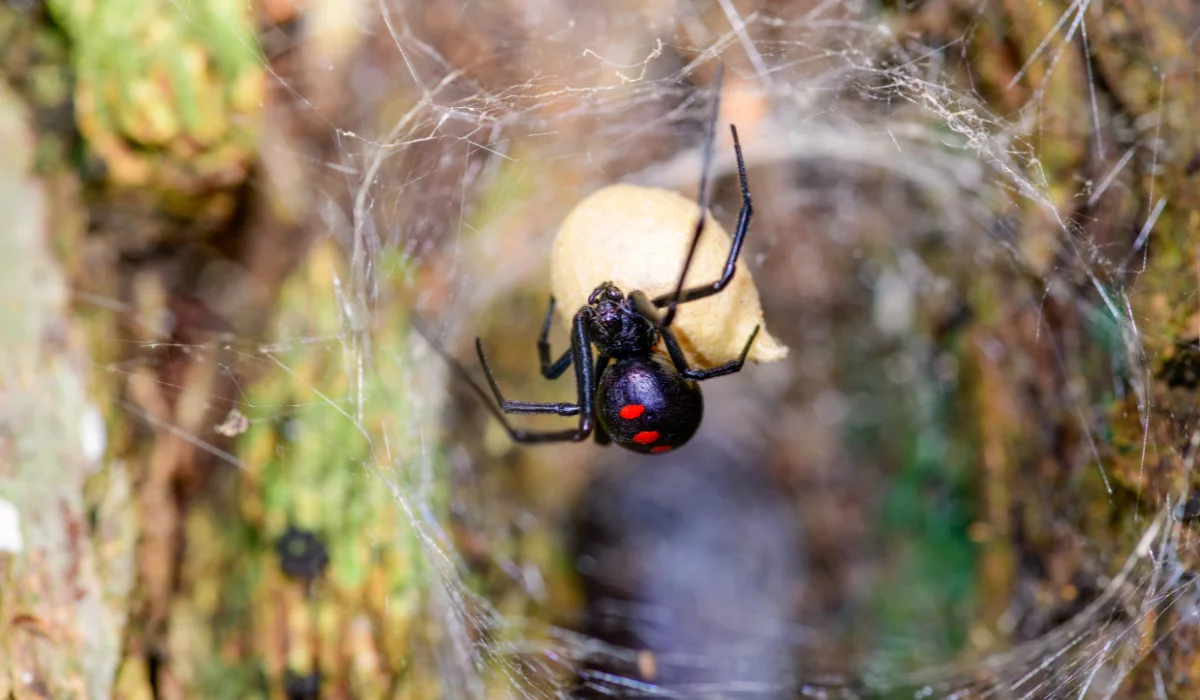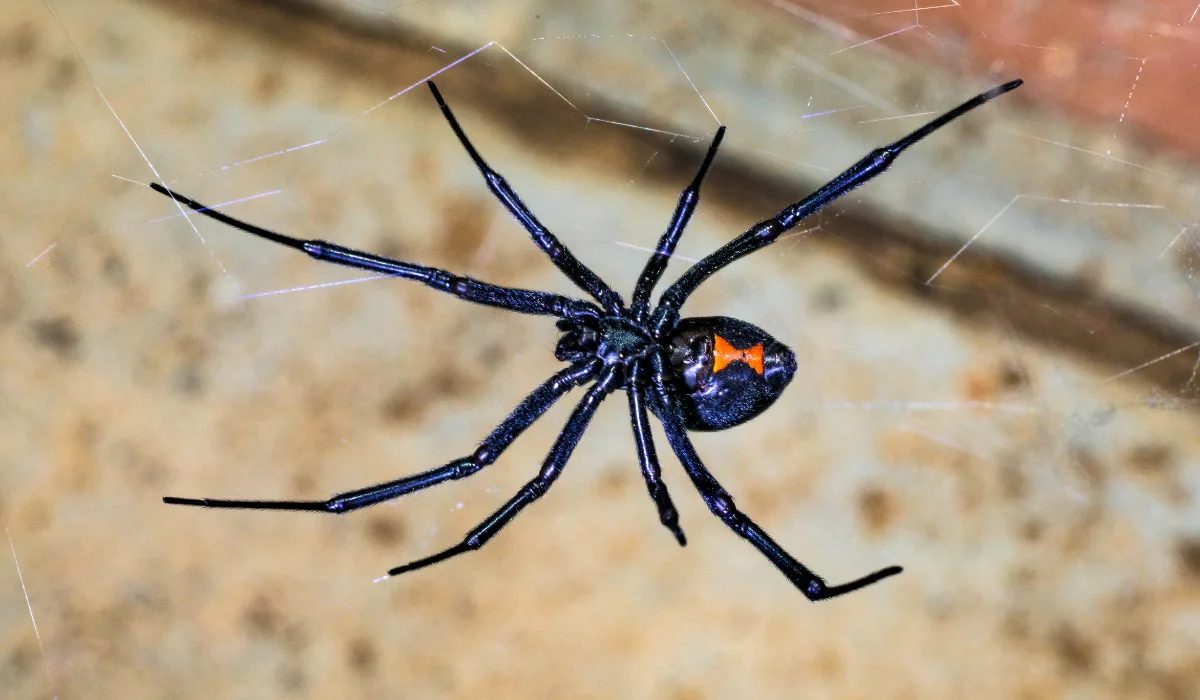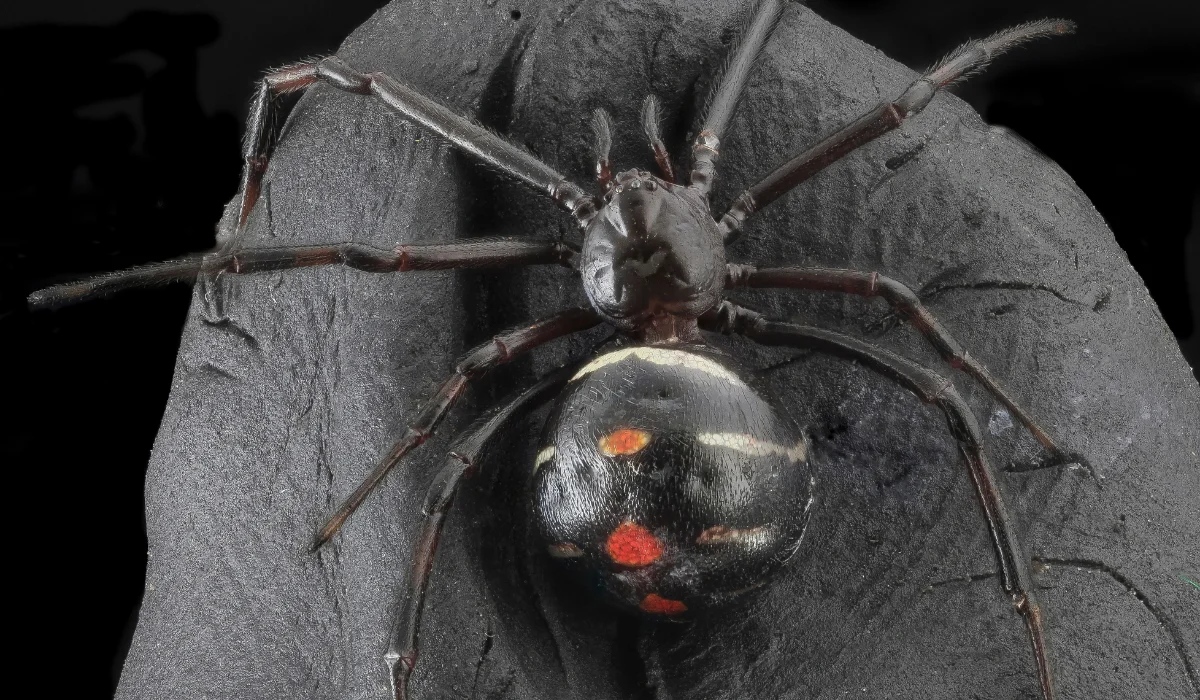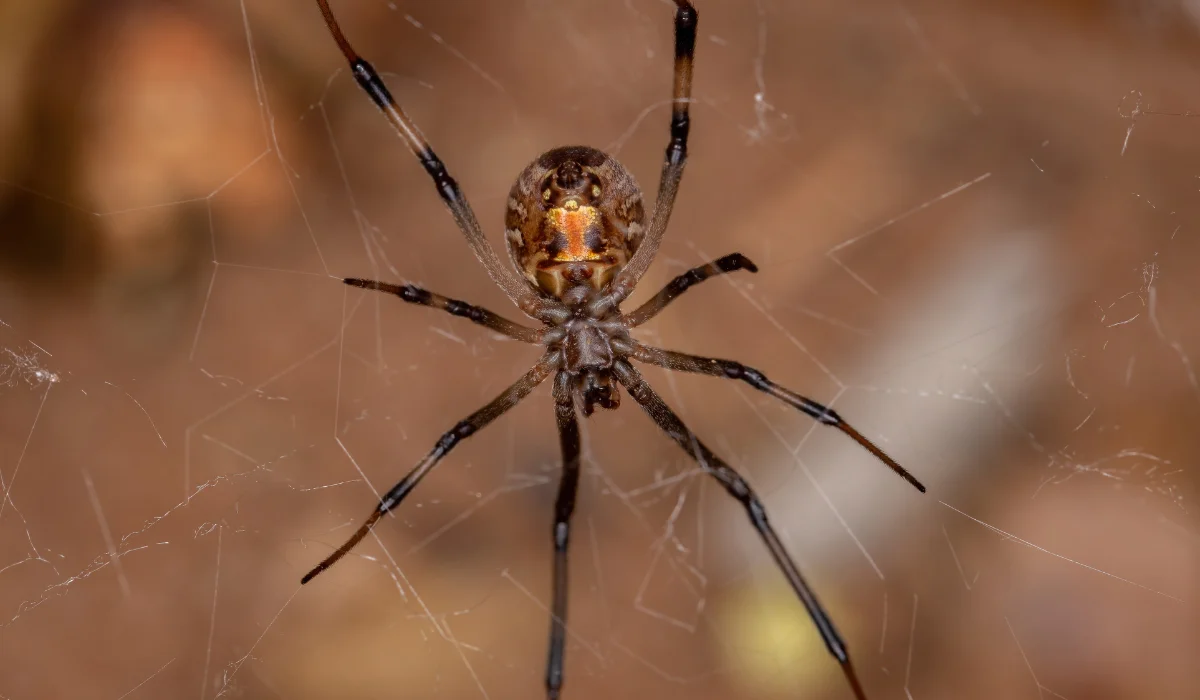Black Widow vs. Brown Widow: What’s the Difference?
When it comes to the topic of black widow vs brown widow spiders, there's always a mix of fear and fascination.
So, what sets these two spiders apart, and do their differences really matter in terms of danger to humans? Keep reading to find out how to distinguish the two.
Key Takeaways
- Black widows display a red hourglass marking, and brown widows an orange or yellow one.
- Both spider species prefer secluded environments, but brown widows adapt more readily to human habitats, increasing their encounters in urban areas.
- Effective bite responses include cleaning the area, applying cold, and seeking medical help if symptoms worsen.
- For persistent spider infestations, professional pest control ensures thorough eradication and safety from venomous spiders.
Black Widow vs. Brown Widow: Key Differences
Although black and brown widow spiders belong to the same genus, they have distinct physical appearances, behaviors, and venom potencies.
Widow Species
Also known as the red widow, the black widow spider includes several species with a red hourglass shape marking on their undersides.
Here are some notable species in North America and the Mediterranean:
Southern Black Widow: Predominantly found in the southeastern United States.

Western Black Widow: Common in the western regions of the United States.

Northern Black Widow : Typical in the northeastern U.S. and parts of Canada.

Mediterranean Black Widow: Found in the Mediterranean region.

Meanwhile, the brown widow spider, a less toxic cousin to the black widow, species include:
Brown Widow: It is found in many subtropical and tropical regions worldwide, including the southern United States. Unlike its black relatives, the brown widow can be identified by the orange or yellowish hourglass marking on its underside.

Physical Appearance
To better understand how to distinguish between the widow spiders, consider these distinctive physical features:
Physical Features | Black Widow | Brown Widow |
Color | Shiny black | Dark brown or tan |
Hourglass Marking | Present in female black widows; bright red mark on the underside of the abdomen | Present in female brown widows; orange or yellow on the underside of the abdomen |
Size | Female: ~1.5 inches (legs included), Male: Smaller | Similar size to a black widow |
Cephalothorax | Black, segmented | Varies, often brown or tan |
Patterns | Generally uniform black | Often mottled with patterns |
Habitats
To clearly understand where you might encounter these two venomous arachnids, here are their preferred habitats and common locations:
Habitat | Black Widow | Brown Widow |
Preferred Habitats | Dark, undisturbed areas, warm climates | Man-made structures, broad climate range |
Common Locations | Southern U.S., Texas, southern California (San Diego and Los Angeles) | U.S. (Florida, California, Texas), the Caribbean, and parts of South America |
Web Construction
Web construction between these species of spiders is another aspect you can consider when setting them apart. Here’s a closer look at their differences:
Web Construction | Black Widow | Brown Widow |
Web Style | Irregular, messy | Chaotic, similar to black widow |
Web Placement | Close to ground, dark corners | Higher areas, under eaves, outdoor furniture |
Adaptability | Less adaptability to human environments | Highly adaptable to human environments |
Behavior
While male black widows and brown widows rarely bite, especially when threatened, their adult female counterparts do.
To gain a clear perspective on the behavior and temperament differences between these dangerous spider species, here’s how you can tell them apart:
Behavior | Black Widow | Brown Widow |
Aggression Level | Low, bites in self-defense only | Low, bites in self-defense only |
Reclusiveness | Highly reclusive | Slightly less reclusive |
Human Encounters | Less frequent encounters | More frequent encounters due to habitat adaptability |
Bite and Venom Potency
To understand the differences in black and brown widow bites and venom potencies, consider these factors:
Bite and Venom | Black Widow | Brown Widow |
Venom Type | Potent neurotoxin | Neurotoxin, less potent |
Bite Symptoms | Severe pain, muscle cramps, spasms | Painful, usually less severe |
Medical Attention | Often needed | Less frequently needed |
What to Do After a Black Widow Bite
Prompt action is crucial after a suspected widow spider bite, especially from these venomous spiders. Since their venom toxicity can cause serious symptoms, immediate attention must be taken by following these steps:
Stay Calm: Panicking can increase heart rate and spread the venom faster.
Clean the Bite: Wash the area with soap and water to reduce infection.
Apply a Cold Pack: Use a cold pack on the bite to reduce swelling and pain.
Keep the Affected Area Elevated: Elevate the area to prevent the venom from spreading.
Avoid Applying a Tourniquet: Do not use a tourniquet. It can do more harm than good.
Take Pain Relievers: Over-the-counter pain relievers like ibuprofen can help manage discomfort.
Monitor Symptoms: Look for symptoms like muscle cramps, nausea, or difficulty breathing, which can indicate black widow bites or reactions to brown widow venom.
Seek Medical Attention: If symptoms worsen or the bite is from a widow spider, get medical help immediately. Describe the spider, if possible.
Stay Hydrated: Drink plenty of fluids. This helps in flushing out toxins.
How to Keep Your Home Spider-Free
Proactive measures can reduce risks by preventing an infestation of house or cobweb spiders. Here’s how to keep them out of your home:
- Seal Crevices: Inspect and seal cracks around windows, doors, and foundations.
- Clean Regularly: Vacuum and dust to remove webs and egg sacs.
- Declutter: Keep garages and storage areas tidy.
- Move Woodpiles: Store wood piles away from the house.
- Dispose of Debris: Clear outdoor debris where spiders might hide.
- Check Outdoor Lighting: Use yellow or sodium vapor lights to deter insects that attract spiders.
- Install Screens: Ensure windows and vents have tight-fitting screens in place.
Consider Professional Pest Control for Spiders
Handling a house spider infestation can be challenging. With black and brown widows being venomous, it's essential to address the issue safely.
If webs and spiderlings start appearing in high-traffic areas like kitchens or bathrooms, it's time to consider professional help.
When dealing with venomous spiders, a professional pest control company (like us at Native Pest Management) can offer peace of mind. While DIY methods can be helpful, we ensure thorough eradication.
